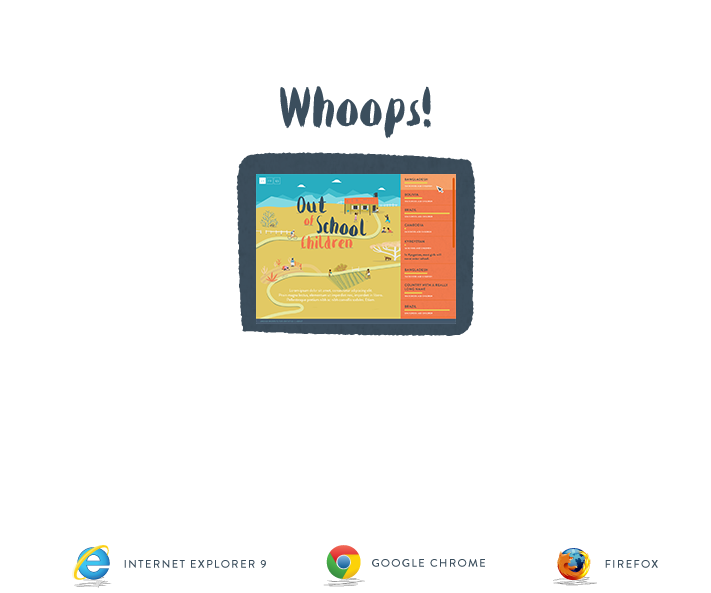No data available
Rural
VS
Urban
0
primary school-age population
Out-of-school children
0
37%
17%
37%
17%
-
30% of richest children will enter lateWill enter late30% of richest children will enter late
-
30% of richest children will enter lateHave left school30% of richest children will enter late
-
30% of richest children will enter lateWill never enter30% of richest children will enter late
-
Rural-Urban
-
Girls-Boys
-
Poorest-Richest
- In school vs out of school
- School experience
